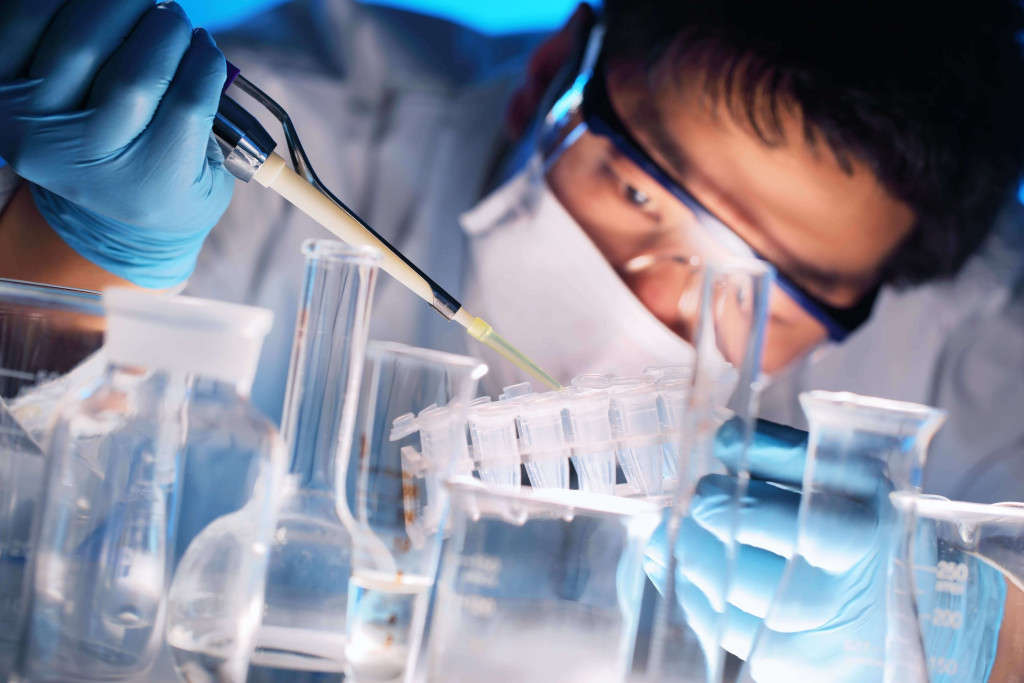Global laboratories provide the perfect environment for breakthroughs in agriculture, novel problems, and imaginative solutions. Extensive preparation between team members along with collaboration is required to run a successful laboratory.
A perfect lab is not easy to achieve. The design of laboratories needs to be done to make the area appropriate and functional, so it can serve its purpose by fitting science-related needs.
The following seven suggestions are essential when designing your laboratory:
Make a Thorough List of All the Equipment You’ll Need
The essential step in planning your laboratory is to identify who will use it.
The layout of your lab will play a significant role in ensuring the safety and well-being of laboratory personnel. You need to know which systems you’ll be using, how they function, where they are located within the space (this is crucial), and what size room would work best for them while not compromising other vital factors like ventilation or usable surfaces.
Next will be procuring the necessary lab equipment. These machines depend on the kind of lab work you’ll be doing. Take note that there is specific use and care instructions for each one.
It is essential to store analytical scientific equipment and instruments in a way that will preserve them. The best sort of case management for this purpose includes durable storage boxes and cases with locks.
Make a Work Plan Ahead of Time
The simplest method to increase lab efficiency is to prepare ahead. Creating a color-coded everyday, itemized to-do list or a weekly calendar will give you a visual representation – and crossing off accomplished chores is quite fulfilling! You’ll be less likely to forget tiny tasks if you have a clear picture of what you need to do.
You’ll also be able to use your time better if you have a clear picture of what you need to complete. Instead of planning your day in your head, writing it down frees up your thoughts to focus on other essential things, such as your research and future theoretical views for your lab.
Writing everything down provides individuals with clear instructions of what needs to happen each day to focus on one task at a time. Research is made more accessible because all distractions have already been eliminated from the equation.
Proper Ventilation and Heating
Putting a high-power, heat-producing device into the lab is risky. High power devices like refrigerators or freezers are tools to keep products cold, but they also generate lots of heat that need cooling. The power company may not know how much heating equipment there will be in the facility. Hence, experts need to make sure enough pressure for venting hot air from these systems has been considered when designing facilities with those types of machines inside them.

Make Preparations for Storing Chemicals
Eliminating potential safety hazards and code violations in any lab setting should be a top priority. This includes comprehensive conventional chemical research, as well as appropriate and sufficient storage for your experiments.
Properly storing chemicals is essential because it keeps the workplace safe by removing the possibility of improper or unsafe storage on work surfaces or inside fume hoods.
Organize Your Work Environment
In an organized lab, you will have fewer things to worry about. If the room is clean and set up correctly before someone starts working each day, they can focus on the task at hand without stopping and completing other tasks that are usually left undone.
It may seem like this small detail doesn’t matter, but if your work area requires efficiency in planning and execution, then adopting these habits early could be important later because setting aside time every day for cleaning ensures that everyone has useable space during experiments every day of the week.
Make Your Working Habits Consistent
Losing your place in a long list of experiments and protocols can be frustrating. Labeling tubes according to the buffer that is used helps with the organization and gives you information about which step in the process has been completed on each tube.
It’s always helpful when people design workflows, so samples are moved from one location to another at specific completion points during an experiment or protocol, like once all necessary buffers have been added.
In addition, this makes it easier if something interrupts our workflow because we’ll know precisely what needs finishing and where those pieces need completing- they will no longer linger somewhere unknown.
To run a successful laboratory, the design of laboratories needs to be done to make the area appropriate and functional. It is also vital for team members to collaborate and prepare extensively before beginning work on projects because such an environment provides breakthroughs in agriculture, novel treatments, and imaginative solutions.


